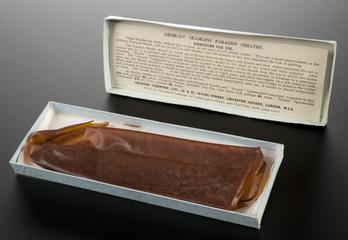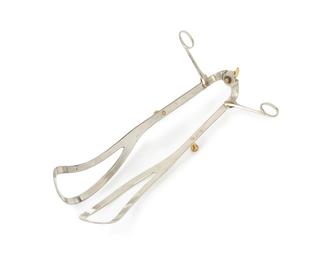
Charlotte box by Oxygenaire, London, England, 1945-1955
- maker:
- Oxygenaire Limited

Charlotte box by Oxygenaire c1950. The Charlotte's box, named after Queen Charlotte's Maternity Hospital, London, was devised originally as a way of giving oxygen to sick babies. It was soon used in the new special care baby units to transform ordinary cots into simple incubators. The heating system comprised a hot water bottle and thermometer inside the perspex box.
An incubator is a controlled environment into which a sick or premature baby is placed to monitor its progress and increase its chances of survival. The Charlotte box was named after Queen Charlotte's Maternity Hospital, London. It was originally a way to give oxygen to sick babies. However, it was soon used in new special care baby units to transform cots into simple incubators. The outlook for premature babies during the first half of the 20th century was very poor. Survivors often experienced brain damage and intellectual and physical disabilities.
New techniques and technologies after the Second World War increased survival rates. These included mechanical ventilation to help newborns breathe, and feeding newborns via tubes directly into their blood vessels. However, the rudimentary heating system in the ‘Charlotte box’ comprised a hot water bottle and thermometer inside the Perspex box. Research and development through the decades saw incubators improve to be able to monitor blood pressure, oxygen levels and lung function.
Details
- Category:
- Obstetrics, Gynaecology & Contraception
- Object Number:
- 1997-2126
- Measurements:
-
overall: 380 mm x 665 mm x 365 mm, 7.12 kg
- type:
- incubator
- credit:
- Ford, R




